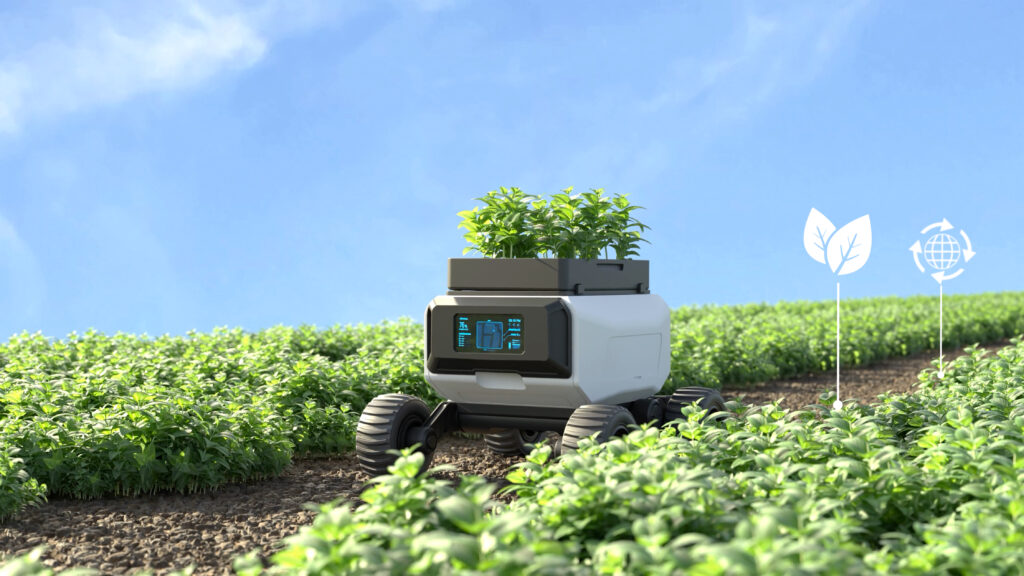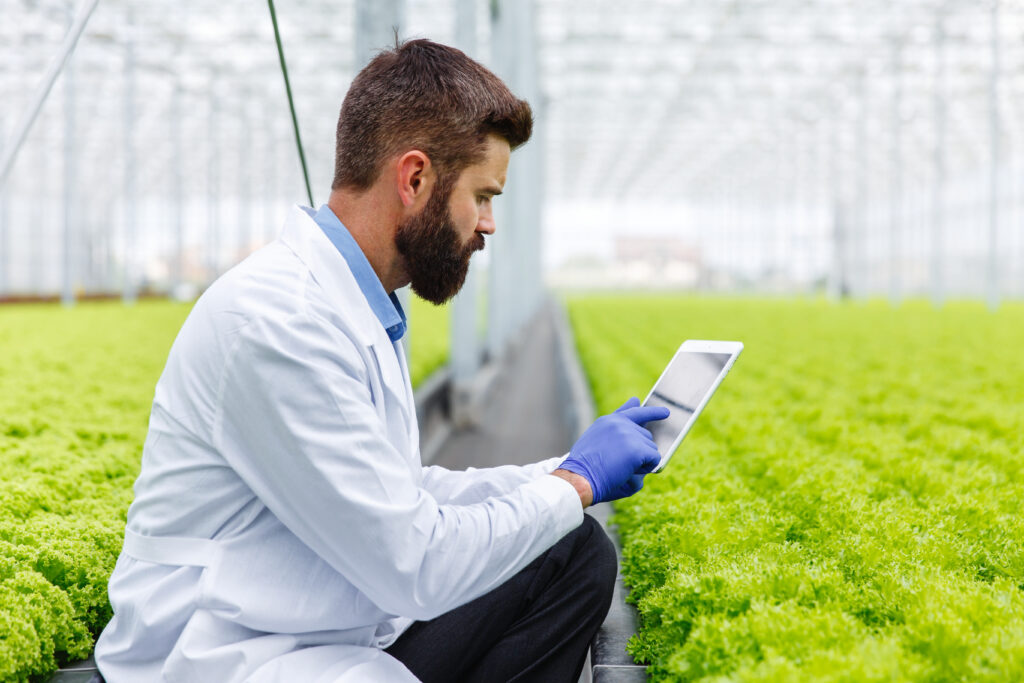Introduction
The agricultural sector is undergoing a profound transformation, driven by advancements in technology that are enhancing productivity and sustainability. Among these technologies, artificial intelligence (AI) and machine learning (ML) are emerging as game-changers, particularly in the field of predictive maintenance. Predictive maintenance employs data-driven insights to anticipate equipment failures and maintenance needs, minimizing downtime and optimizing resources. This article explores how AI and ML are revolutionizing predictive maintenance in agriculture, the benefits they offer, the challenges faced, and future prospects.
Understanding Predictive Maintenance
Predictive maintenance involves using data analytics, AI, and ML to monitor equipment and predict when maintenance should be performed. Unlike traditional maintenance strategies that rely on scheduled intervals (preventive maintenance) or reactive maintenance (fixing issues after they occur), predictive maintenance aims to determine the condition of equipment in real-time. This proactive approach can significantly reduce costs, improve the lifespan of agricultural machinery, and ensure the smooth functioning of farming operations.
Key Components of Predictive Maintenance

Data Collection:
Sensors and IoT devices play a crucial role in the modern agricultural landscape by collecting data at various stages of farm operations. These technologies monitor a wide range of parameters, including machinery performance, soil conditions, weather patterns, and crop health. Through continuous data gathering, farmers can gain valuable insights that help optimize their processes, improve resource management, and increase overall productivity. This real-time data not only aids in decision-making but also supports proactive measures to address potential issues before they escalate, ultimately leading to more sustainable farming practices.
Data Analysis:
AI algorithms systematically analyze the data to identify patterns, correlations, and anomalies that can indicate potential failures. By leveraging advanced statistical methods and machine learning techniques, these algorithms can uncover insights that may not be immediately apparent. This proactive approach helps in predicting maintenance needs and optimizing operational efficiency, ultimately reducing downtime and improving overall system reliability.
Predictive Models:
Machine learning models are trained on historical data to predict when equipment is likely to fail or require maintenance. By analyzing patterns and trends within the data, these models can identify potential issues before they escalate into significant problems. This proactive approach not only helps optimize maintenance schedules but also minimizes downtime and reduces operational costs. As a result, organizations can enhance the reliability of their equipment and improve overall efficiency
Decision-Making:
Based on the predictions, farmers can make informed decisions regarding maintenance schedules, replacement of parts, and overall management of resources. By analyzing this data, they can not only optimize operational efficiency but also extend the lifespan of their equipment. Additionally, such insights allow for better allocation of financial resources, ensuring that investments are made at the right time to prevent costly breakdowns and downtime. Ultimately, this proactive approach to decision-making can lead to improved productivity and profitability on the farm
The Role of AI and Machine Learning in Predictive Maintenance

Data-Driven Decision Making
AI and ML leverage large datasets to uncover insights that would be impossible for humans to discern. For example, a farmer may collect data from multiple sensors on a tractor, analyzing performance metrics like fuel consumption, engine temperature, and vibration levels. Machine learning algorithms can identify the normal operational parameters and flag deviations that may indicate an impending failure.
Enhanced Equipment Monitoring
Machine learning models can continuously monitor the health of machinery by processing sensor data in real-time. Anomalies such as unusual vibrations or elevated temperatures can be detected early, allowing for timely intervention before a costly breakdown occurs. For example, a study found that applying ML algorithms to tractor maintenance data improved failure prediction accuracy by up to 90%.
Integration with IoT
The Internet of Things (IoT) allows for the seamless connection of devices and systems. In agriculture, IoT sensors can be deployed across various equipment to gather crucial data about performance and environmental conditions. AI and ML algorithms can process this data to offer insights on operational efficiency and maintenance needs, fostering an interconnected approach to farm management.
Benefits of Predictive Maintenance in Agriculture
Cost Reduction
Predictive maintenance dramatically reduces maintenance costs by preventing unexpected equipment failures. In agriculture, where machinery breakdowns can lead to significant losses, a proactive maintenance strategy allows farmers to allocate resources more efficiently and reduce repair expenses.
Increased Equipment Lifespan
Regular maintenance based on predictive analytics can extend the lifespan of agricultural machinery. By addressing issues before they escalate into major failures, farmers can ensure that their equipment operates effectively for longer periods.
Improved Crop Yields
When agricultural machinery functions optimally, it can have a direct impact on crop yields. Reliable equipment enhances planting, irrigation, and harvesting processes, contributing to better overall productivity and profitability.
Resource Optimization
With AI and ML, farmers gain insights that enable better resource management. Instead of using a one-size-fits-all approach, predictive maintenance allows for customized strategies tailored to the specific needs of each piece of equipment and farming operation.
Challenges in Implementing Predictive Maintenance

Data Quality and Integration
One of the primary challenges in implementing predictive maintenance in agriculture is ensuring data quality and integration. Farmers must invest in reliable sensors and IoT devices capable of collecting accurate data. Moreover, integrating data from various sources can be complex and may require advanced expertise.
Cost of Implementation
While the long-term benefits of predictive maintenance are substantial, the initial costs associated with implementing AI and ML technologies can be daunting for some farmers. Small-scale operations may find it challenging to allocate sufficient funds for the necessary equipment and software.
Skill Gap and Knowledge Barrier
There is a skill gap in the agricultural workforce regarding AI and data analytics. Many farmers may lack the technological expertise to interpret and act on the insights generated by predictive maintenance systems. Training and education become essential to empower them to leverage these technologies effectively.
Data Privacy Concerns
As agricultural equipment becomes more connected, concerns about data privacy and security arise. Farmers must ensure that their data is protected from unauthorized access and potential misuse, which can complicate the implementation of IoT and AI solutions.

The Future of Predictive Maintenance in Agriculture
Advances in Machine Learning Algorithms
The field of machine learning is evolving rapidly, with new algorithms continuously being developed. In the coming years, we can expect more sophisticated predictive models that are capable of making more accurate forecasts and recommendations for maintenance schedules.
Integration with Advanced Robotics
As robotics technology advances, we can anticipate a future where autonomous machines equipped with predictive maintenance capabilities will revolutionize the agricultural landscape. These robots will be able to monitor their own health and perform maintenance tasks autonomously, further improving efficiency and reducing labor costs.
Expansion of IoT Connectivity
The proliferation of IoT devices will enhance data collection capabilities, allowing for more granular monitoring of agricultural operations. This increased connectivity will facilitate real-time decision-making and create opportunities for further optimization in predictive maintenance strategies.
Sustainability and Climate Resilience
The importance of sustainable farming practices is on the rise. Predictive maintenance plays a crucial role in this paradigm by enhancing equipment efficiency and reducing waste. Within the context of climate change, maintaining equipment in optimal condition can also lead to better adaptability and resilience against changing weather patterns.
Conclusion
AI and machine learning are revolutionizing predictive maintenance in the agricultural sector, offering significant benefits in terms of cost reduction, resource optimization, and improved productivity. Despite the challenges associated with implementation, including data integration and the skills gap, the potential of these technologies is substantial. As the agricultural landscape continues to evolve, embracing AI and ML for predictive maintenance will be critical for farmers looking to enhance their operations and contribute to sustainable food production.
By investing in these technological advancements, the agricultural sector can harness data-driven insights to secure a more efficient and resilient future.
Arshon Technology specializes in innovative predictive maintenance solutions across industries. By harnessing advanced AI and machine learning, they enable real-time monitoring of equipment health. Their solutions integrate with IoT devices for continuous data collection and analysis, predicting maintenance needs and identifying potential failures. With a user-friendly interface, users can easily interpret insights to enhance decision-making. Implementing Arshon Technology’s solutions reduces downtime and boosts operational efficiency, promoting sustainability across various sectors.
